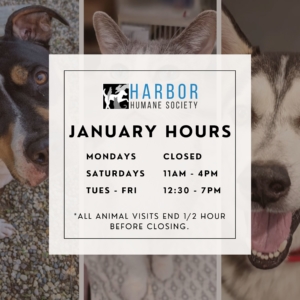BEYOND BORDERS: Why we believe animal transfer partnerships are so important today
There were dogs everywhere. Over 300 on-site that day along with a dozen farm animals, some chickens and geese, and a few cats. The fence of collars and chains greets you upon arriving along with the reminder that “We face a battle few can understand.” Even with a plan on how to pick dogs, who is going to vaccinate, how we will get health certificates, it is still terribly overwhelming. 300 dogs. There are various breeds and ages. Turned in by owners who can no longer care for them. Let go on the street and picked up by animal control. These animals were so desperate for love and affection that they lovingly lick our faces as we poke and prod them, trying to decide if they will be able to make the transfer.
This is the reality of many our shelters partners in southern states.
When I first started in the field of animal sheltering in 2002, transferring was a bit taboo. Why would we bring in more animals from another state into ours when we already have so many? Why wouldn’t we help our animals first Why would we help other states. There were SO many questions back then. As the years went by, it became much clearer.
In the Midwest, we saw our population in shelters decreasing. There were fewer animals coming into shelters. There was more support for owners keep their animals. Low-cost spaying and neutering were helping to control pet overpopulation. Social media sites and sites like Craig’s List, kept unwanted animals moving from one owner to the next.
It became somewhat of a belief that all the Midwest shelters were full of bully breeds and cats. I would constantly see people who were interested in adopting come in and leave empty-handed, unable to find an animal that was a good fit for their family or even one that their living situation would allow.
Meanwhile, animals in shelters in southern states were dying needlessly, having to be euthanized because there was simply no more room. When you have over 100 animals coming in each day and maybe only 5 leaving, it becomes hard to appropriately care and treat everyone.
Transferring is simply a case of supply and demand. There are so many areas that have high number of homeless pets, which we call source shelters. And there are so many shelters in some states, typically in the Midwest and the East and West coasts, that have so many adopters- they don’t have enough animals. Relocating animals from states with a never-ending supply can be an important factor in ending the needless euthanasia of adoptable pets due to shelter overcrowding and lack of resources. It also helps these source shelters to save more lives in their communities.
The source shelters we work with are doing their best to end overpopulation in their communities and make sure each animal has the best outcome possible. Tipton County Claws and Paws, a group we work with from Tennessee, has an amazing program to fix animals. If families find themselves with an accidental litter, they can bring it to the shelter and they will fix mom (and dad, if they can find him) for free to no cost and place the puppies into a destination shelter to find loving homes. These shelters are also working on having best practices, fighting disease, and making sure that each and every animal they transfer has the best chance at life and love.
Transferring animals into a shelter like ours, gives adopters a variety to choose from. When adopters have more choices, they are more likely to find a good match and less likely to seek out a pet from a boutique pet store, online puppy sales, or unscrupulous breeders. (P.S. We know there are excellent breeders out there! We always encourage people to do their research and truly understand what a good breeder does and does not do. Here is a great resource: https://www.humanesociety.org/resources/how-find-responsible-dog-breeder)
When we transfer in dogs, we usually take in a mix of puppies and adults. We may bring in as many as 50 puppies and dogs on one transfer. Thanks to an amazing community full of willing fosters and even more willing adopters, we are able to save so many animals from uncertain futures. The great thing about transfers is it benefits every single animal we have in our care. Puppies and transfer dogs bring more foot traffic in. People come to adopt, to look at, or to dream of adding a new friend to their family. We always love when people come into adopt a puppy and then the reality of puppies (which is lots of poop and unruliness) sets in. Sometimes those families are up for the challenge and other times they take a second look at the adult dog who is sitting in their cage with no mess and waiting patiently for someone to notice them and take that dog home instead. Sometimes a person walking in the door to just “look at the puppies for fun” walks out with a new kitty friend- we see the adoptions of both species climb whenever we transfer dogs into our shelter.
So, this the why of why we transfer. It is why we constantly fight to save more lives no matter what an animal’s originating zip code is. And it is why we have been able to make thousands of happily ever after fairytale endings.
The image I started with at the beginning of this blog was what I experienced the first time I went to St. Landry’s Animal Control and Rescue in Louisiana. I went with several other shelter leaders from Michigan on a trip sponsored by the amazing Bissell Pet Foundation. Together, with these shelters, we have made several trips and saved hundreds of lives by working together. This is what animal sheltering should be. People working together to save animal’s lives. It really is that simple. Right now, is a bit different. We are concentrating on in-state transfers as our out of state transfers are currently suspended due to COVID-19. The stories from the shelter directors I work with are heartbreaking. Just last week, Tipton took an extra 50 dogs in from a hoarding case. However, when we are seeing the light in this tunnel of self quarantine and unknown times, we are ready and waiting for that next transfer to pull up and to receive all the loving tail wags and licks from grateful pups.
Jen Self-Aulgur, Executive Director














